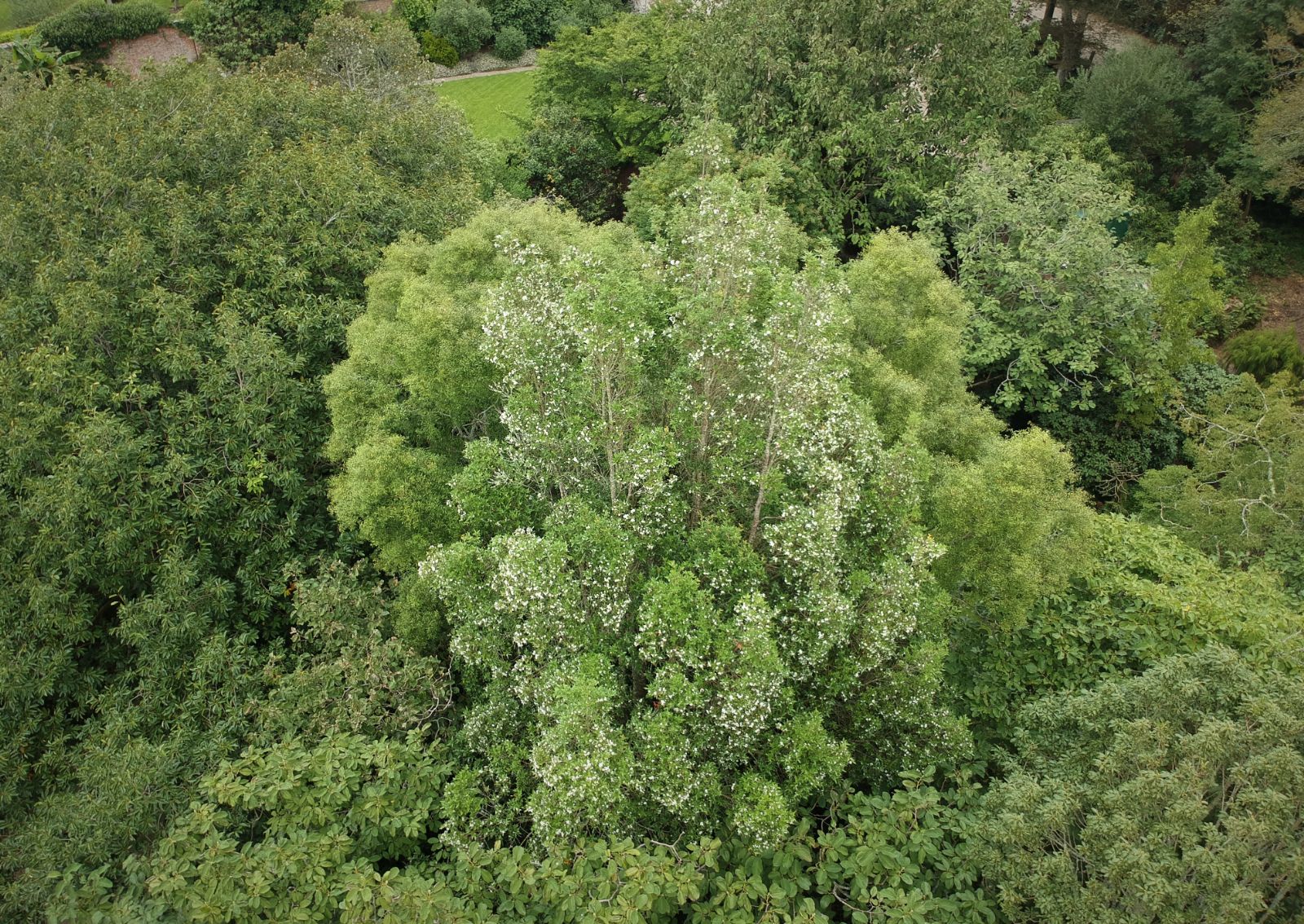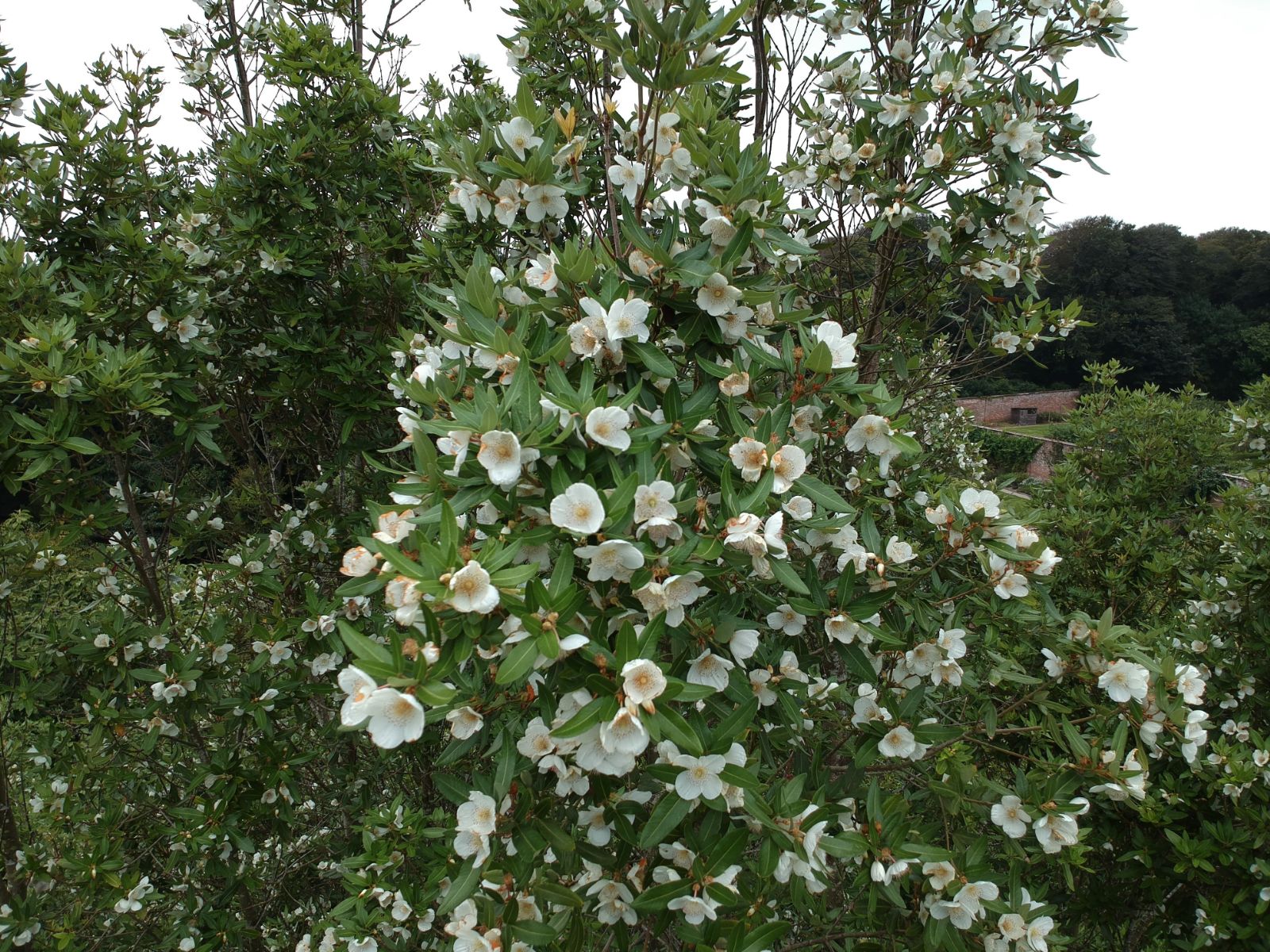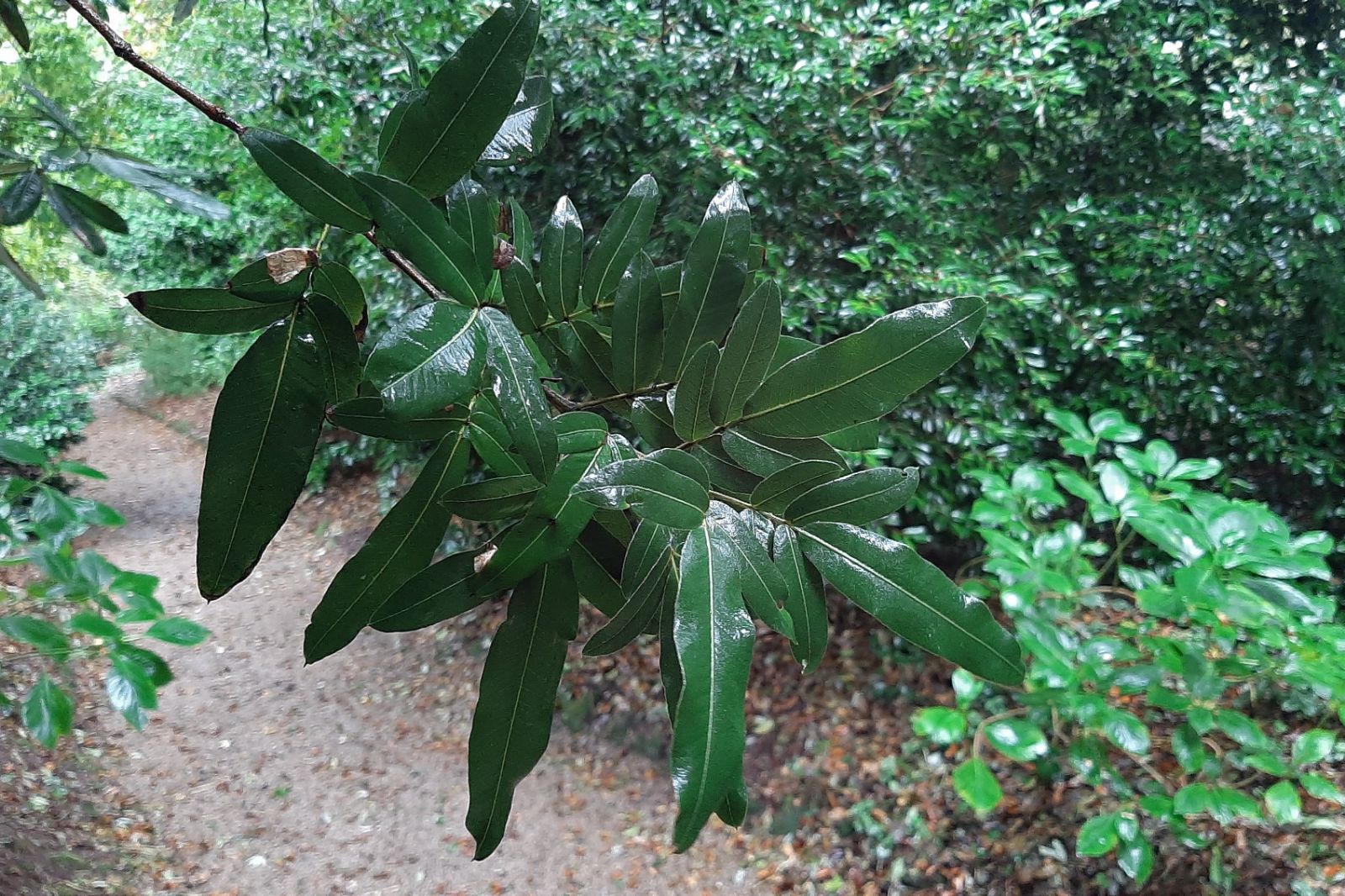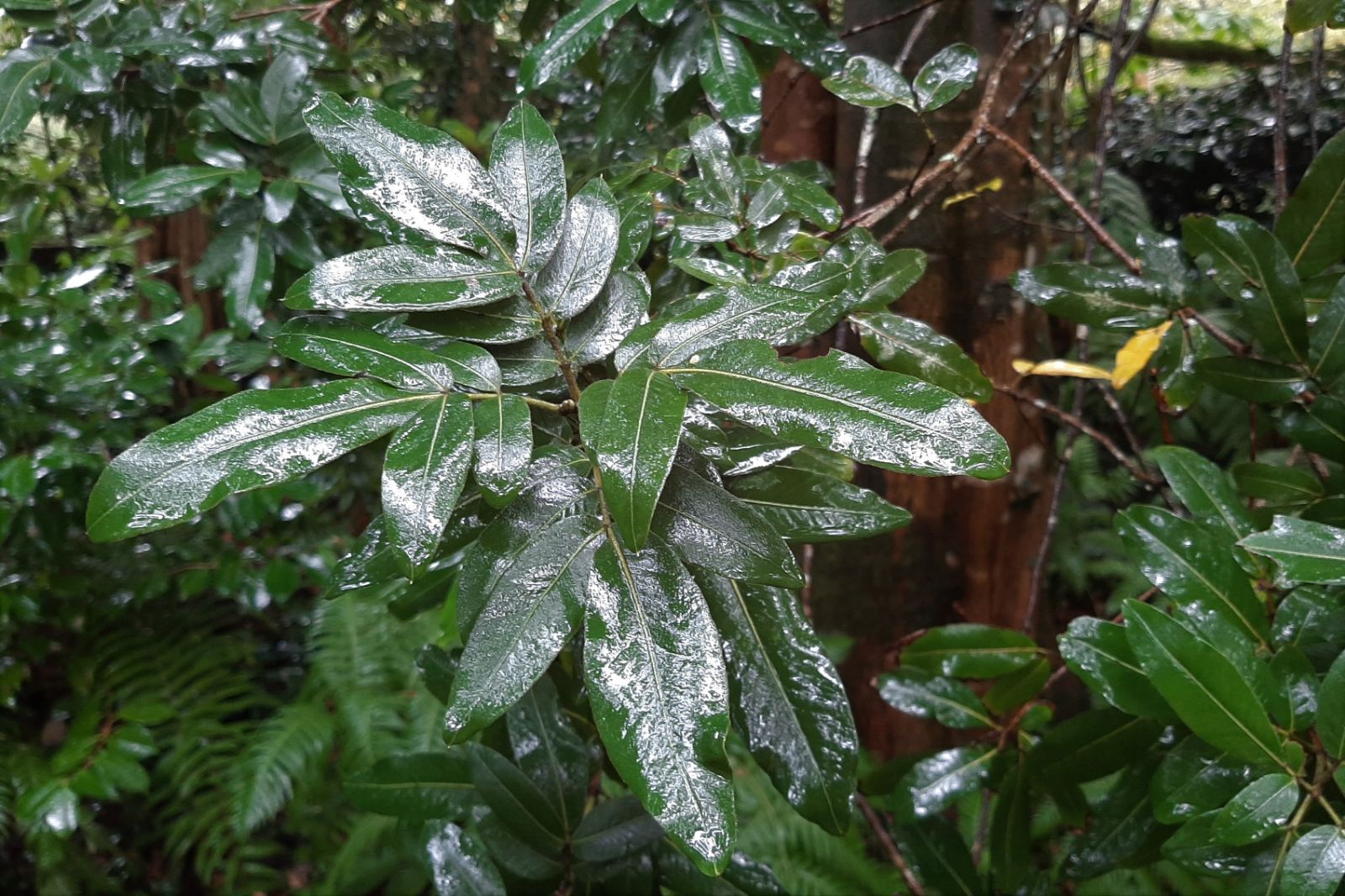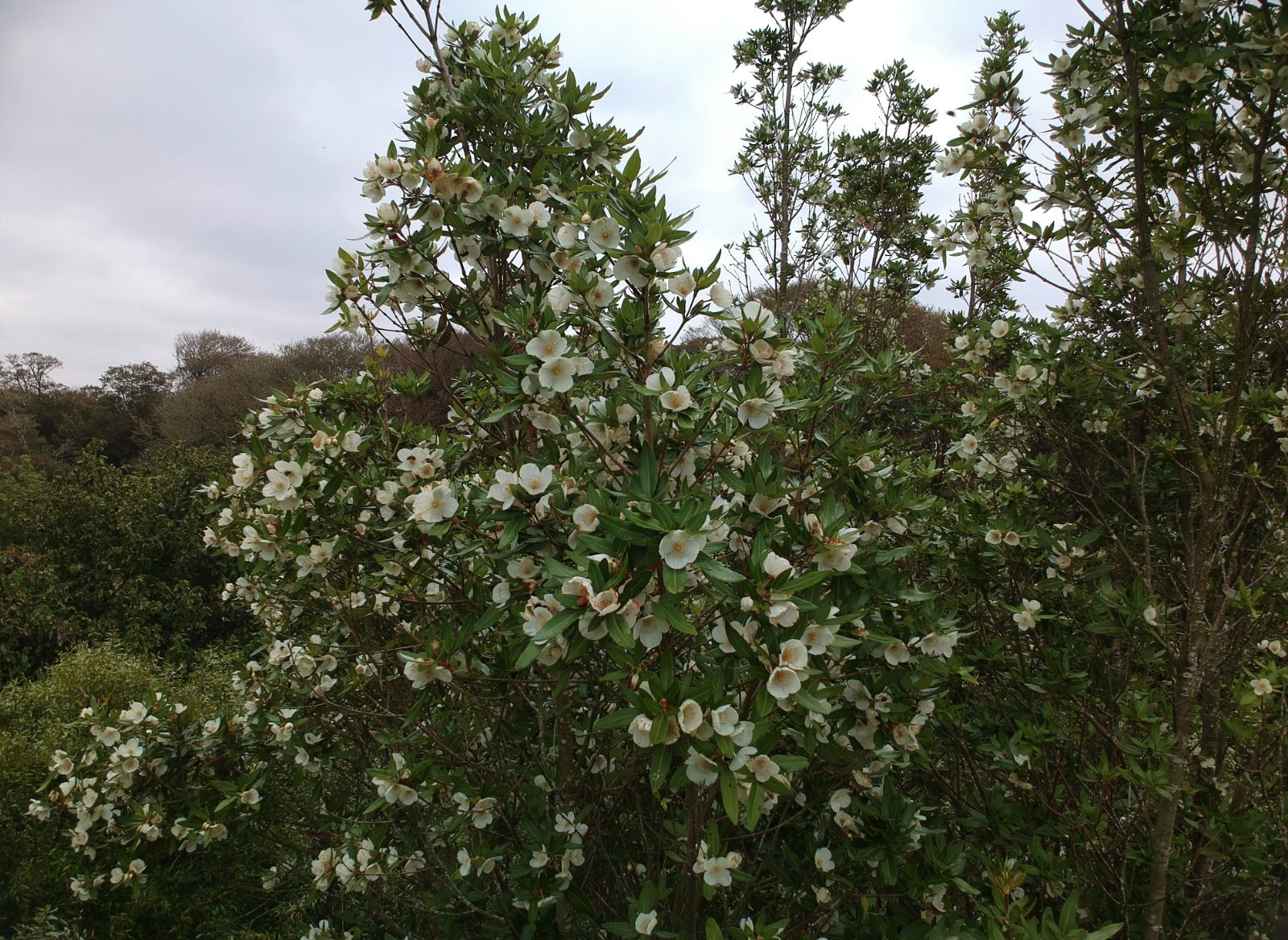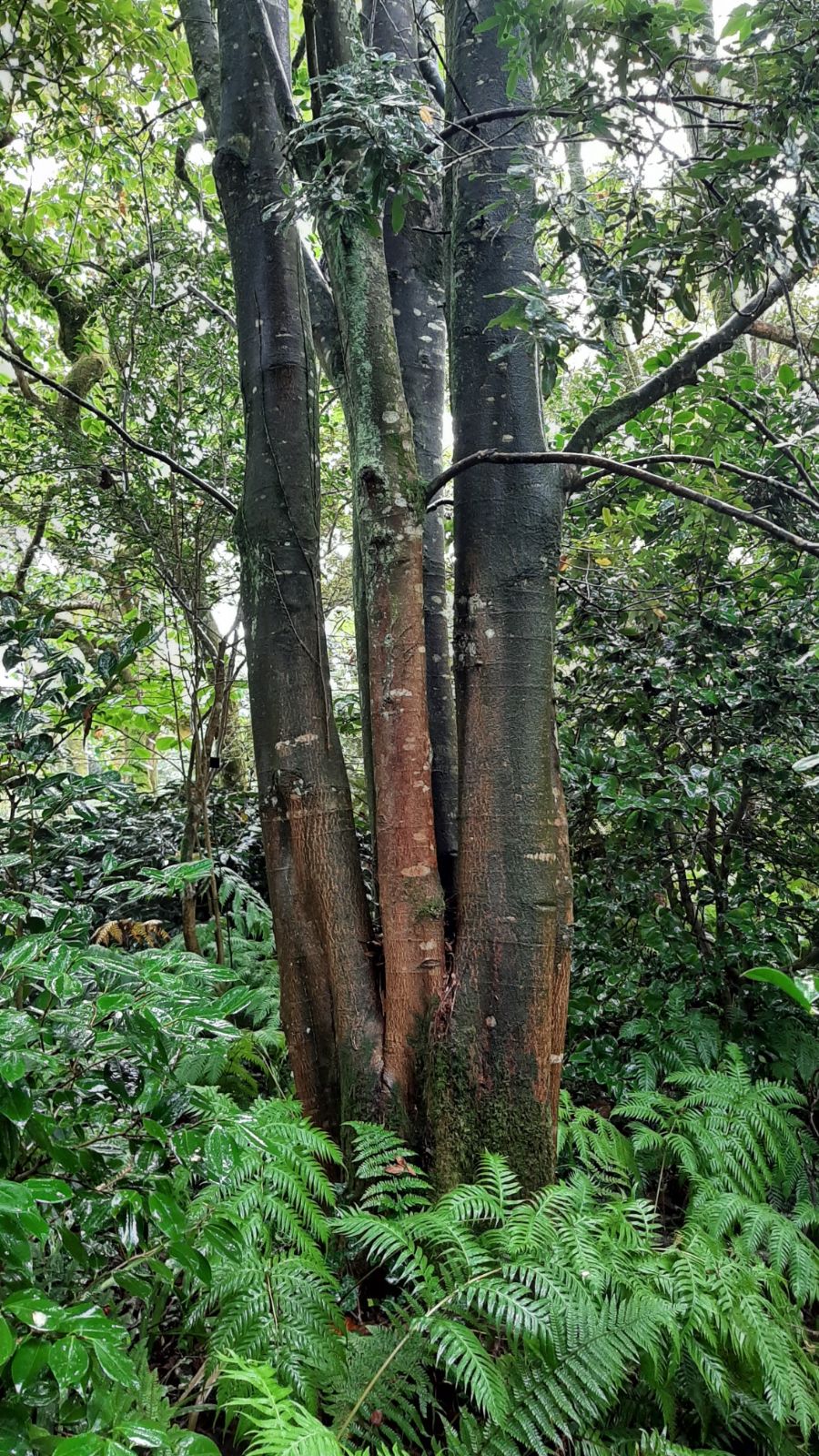Eucryphia × splendens
Sponsor
Kindly sponsored by
William & Griselda Kerr
Credits
Tom Christian (2021)
Recommended citation
Christian, T. (2021), 'Eucryphia × splendens' from the website Trees and Shrubs Online (treesandshrubsonline.
Genus
- Eucryphia
- E. cordifolia × E. moorei
Tree to 20 m. Multi-stemmed from a single, short bole. Crown densely broad-columnar. Branchlets pale pinkish-brown, densely pubescent, nearly winged and approaching cruciform below nodes on youngest growth; becoming rounded with longitudinal ridges with age. Vegetative buds ovoid, 4–5 mm, not sticky, densely pubescent. Leaves 10–15 cm long, petiole and rachis densely pubescent, rachis internodes 8–15 mm, compound with (3–)5–7(–9) leaflets. Leaflets elliptic-oblong, olive-green and glabrous above or with a short pubescence along the midrib; glaucous below, undersides densely tomentose; apex distinctly short-mucronate, mucro to 2 mm; base rounded, usually uneven, occasionally shallowly cordate; margins entire, wavy; terminal leaflet petiolate, always the largest, 5–12 × 1.5–3.5 cm; lateral leaflets sessile or sub-sessile, 2–6 × 0.9–2 cm. Flowering in autumn (September–October in Cornwall, UK); flowers not seen in detail. (T. Christian pers. obs. 2020).
USDA Hardiness Zone 9b
RHS Hardiness Rating H3
Two Eucryphia hybrids arose at Trengwainton, Cornwall, UK in the 1930s. Both were exhibited at an RHS show in Vincent Square, London, in 1954 under the cultivar names ‘Madron’ and ‘Penwith’, but both quickly fell victim to confusion. E. ‘Penwith’ was erroneously assigned to E. × hillieri in the show proceedings, an error that soon permeated into mainstream horticultural literature and which wouldn’t be rectified until Clarke (1988) clarified that ‘Penwith’ was a hybrid of E. cordifolia × E. lucida. The same show proceedings that gave rise to this confusion failed to record the parentage of ‘Madron’ at all; ‘Penwith’ at least gained a foothold in horticulture and so astute growers were able to infer it was nothing to do with E. × hillieri, but ‘Madron’ seems never to have entered the horticultural trade, nor, indeed, does it appear to have been privately circulated. The lack of information about ‘Madron’, and the apparent lack of living material to attest to its true identity, meant that it was quietly forgotten (Christian 2021).
By the time this genus was revised for Trees and Shrubs Online in 2018 there was scant reference to ‘Madron’ in contemporary literature. It was tempting to follow the example of authors such as Wright (1983) and Hillier & Coombes (2002) and drop any mention of it entirely, but instead the present author opted to retain it in light of one very tenuous lead, a 2014 note by Owen Johnson against a single record in The Tree Register of a not-quite-right Eucryphia still growing at Trengwainton (Tree Register 2018; record id 71424). There was no time to investigate before the new revision of this genus was published on this website in 2018, but in October 2020 the present author had the opportunity to visit Trengwainton and, against all expectation, found a handsome tree of nearly 20 m that did not match any known Eucryphia species or hybrid. The logical conclusion was that this plant, and another identical tree growing nearby, was the long-lost ‘Madron’. The parentage was clear to see: E. cordifolia × E. moorei. The rediscovery was written up for The Plant Review and a new hybrid binomial E. × splendens published at the same time, referencing the large, leathery, pinnate leaves, arguably the most handsome foliage the genus has to offer (Christian 2021).
Cuttings were taken in-house at the time of the rediscovery in 2020 but these ultimately failed. Trengwainton remains under statutory plant health orders due to the presence of Phytopthora, and no living material can leave the garden except under strict conditions. The National Trust’s Plant Conservation Centre has subsequently secured material for phytosanitary micropropagation and the results of this are eagerly awaited. When material finally becomes available for distribution it seems reasonable to suppose that, like its parents, ‘Madron’ will only really excel in climates very like that of Trengwainton, with ample, year-round precipitation and very mild winters, free from all but the lightest frosts.
'Madron'
Discussed in the entry for E. × splendens.

